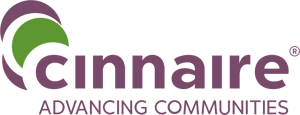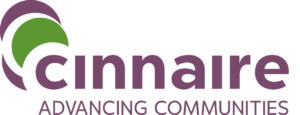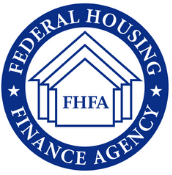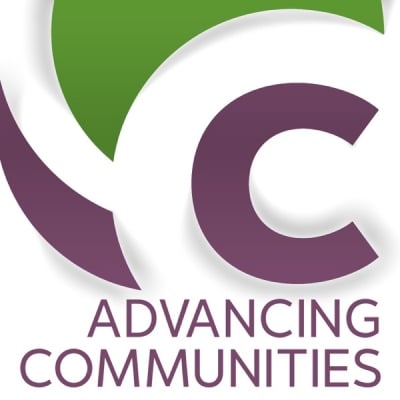
ALISON BURRIS
With the Federal Home Loan Bank (FHLB) System approaching their centennial, the Federal Housing Finance Agency (FHFA) has been reviewing the FHLB System “to ensure they remain positioned to meet the needs of today and tomorrow.”

As a CDFI member of the FHLB of Chicago, Cinnaire participated in an FHFA roundtable and submitted comments in March, advocating for the FHLBs to expand their partnerships with CDFIs. In our comment letter (PDF attached or posted below), note that Cinnaire recognizes that “the growing relationship between CDFIs and the FHLBank System offers tremendous potential to better enable CDFI members to achieve their missions of bringing critically needed financial products to underserved markets.”
Cinnaire recommended strengthening those relationships, providing greater flexibility to CDFI members of the FHLB System, and improving CDFI access to FHLB financial products to help them reach underserved markets and products.

March 31, 2023
Federal Housing Finance Agency
Division of Federal Home Bank Regulation
400th Street SW
7th Floor
Washington, D.C. 20219
To Whom It May Concern:
Thank you for the opportunity to share our perspective on Federal Home Loan Bank (FHLBank) System as part of the Federal Housing Finance Agency’s (FHFA) review. As a Community Development Financial Institution (CDFI) member of the FHLBank of Chicago, Cinnaire Lending brings desperately needed capital to impactful affordable housing and community facilities projects in markets that are underserved by the mainstream financial sector. The FHLBank System plays a critical role in helping produce affordable housing and impactful community projects in the communities we serve.
Founded in Michigan 30 years ago as a mission-driven tax credit syndicator, Cinnaire has a long history of raising and deploying capital for impactful affordable housing and community development projects in our footprint. Now serving nine states, Cinnaire has raised more than $4.9 billion to create more than 80,000 affordable homes for families, seniors, individuals with disabilities, and veterans. Cinnaire Lending, a nonprofit subsidiary and certified CDFI headquartered in Chicago, brings flexible affordable housing and community development lending, further enhancing Cinnaire’s ability to work with mission-driven partners in our footprint to transform underestimated communities into thriving communities.
CDFls share a common goal of expanding economic opportunity in low-income communities by providing access to financial products and services for residents, nonprofits, and businesses. Across the country, there are approximately 1,300 certified CDFls that make up a $185 billion industry, located in all 50 states. CDFls cultivate deep relationships where they invest and build partnerships. These local relationships, including partnerships with local governments and foundations, help drive investment into communities that are underserved.
Cinnaire Lending’s membership in the FHLBank of Chicago has enhanced our ability to serve these communities while helping the FHLBank system support impactful affordable housing and community development projects. Cinnaire has also sponsored many developers’ Affordable Housing Program (AHP) applications, resulting in more than $29 million in 47 projects across our footprint.
As you know, Congress has provided the FHLBanks with distinct advantages that enable them to provide crucial liquidity to its members. In 2008, Congress expanded FHLBank member eligibility to include non-depository CDFls that have been certified by the U.S. Department of Treasury’s CDFI Fund. FHFA’s membership standards rulemaking in 2010 recognized both the value that CDFls can provide to FHLBanks as well as their unique nature and differences from traditional financial institutions.
CDFI membership in the FHLBank system has proved mutually beneficial for CDFls and the FHLBanks. CDFls and the communities they serve have benefitted from low-cost access to capital, helping address one of the main constraints on CDFI efforts to boost housing opportunities in low-income communities. At the same time, CDFls have diversified the FHLBanks’ membership to include a set of reliable, mission-driven lenders that help the FHLBanks achieve the housing finance and community development mission intended by Congress. CDFls help FHLBanks achieve this mission in a manner that supports the safety and soundness of the FHLBank system. CDFis have proven to be reliable lenders with low loan loss rates, making them an ideal partner.
As FHFA reviews the FHLBank system, we encourage you to consider the unique value that CDFls bring to the FHLBanks. Any changes to the system should consider the impact on CDFIs’ ability to bring desperately needed lending capital to impactful developments across the country. In addition, we encourage FHFA to enable the FHLBank system to build on their growing relationships with CDFls. In the nearly 10 years since non-depository CDFls became eligible for FHLBank membership, CDFls and FHLBanks have made substantial progress in understanding their respective business models. However, more can be done to deepen these relationships and expand the FHLBanks’ impact with their CDFI partners.
We have provided below our responses to selected questions regarding CDFls’ involvement in the FHLBank System.
How can the FHLBanks work with CDFls to better support affordable housing and community and economic development?
The growing relationship between CDFls and the FHLBank System offers tremendous potential to better enable CDFI members to achieve their missions of bringing critically needed financial products to underserved markets. CDFls can also help the FHLBank system enhance their impact without posing additional risks.
To better support affordable housing and community development activities, FHLBanks should further develop and strengthen their relationships with CDFls and provide greater flexibility to CDFls. In particular, the major barrier we and other CDFls have encountered is the haircut required by many FHLBanks when CDFls seek to pledge collateral. As noted above, CDFls have performed very well, experiencing low loan loss rates. However, due to their unique nature, CDFls are not intended to operate like traditional banks since many loans do not require security. Many CDFls are unable to meet FHLBank collateral requirements, resulting in haircuts on pledged collateral that prevent them from accessing FHLBank products, including those that CDFls would be best positioned to deploy due to their close relationships with underserved markets and activities, such as affordable housing.
Can the FHLBanks facilitate relationships between non-depository CDFls and non-CDFls to support community and economic development? If so, how? If not, why not?
Yes, FHLBanks can and should facilitate relationships between non-depository CDFls and non-CDFls to support community and economic development. As noted above, access to FHLBank advances is a challenge due to the nature of collateral being pledged by CDFls. One potential way to address that issue while strengthening non-depository CDFI and non CDFI relationships would be to enable partner banks to pledge some of their assets already placed at the FHLBanks on behalf of non-depository CDFls.
What existing or new FHLBank products and structures would be helpful to CDFls in supporting community and economic development? What are the benefits and challenges of these product structures from the CDFI perspective?
See above. Many CDFI members of the FHLBank system struggle to use many FHLBank credit products due to liquidity requirements. For example, the Community Investment Cash Advance (CICA) provides funds for targeted investments in distressed communities. Providing greater flexibility on collateral requirements would better enable CDFls to support community and economic development activities in the market we serve.
In addition, some FHLBanks offer products that are better suited to CDFls. FHFA may consider providing greater flexibility on geographic limitations for FHLBank membership to enable CDFls to access these products and encourage innovative approaches.
Should the FHLBanks use a standardized approach to evaluate CDFI financial condition and credit risk? If yes, how should this be approached? If no, how should it differ?
The current tailored financial condition requirement approach has proved effective at fostering sustainable partnerships between CDFls and the FHLBank system without affecting the safety and soundness of the system. CDFls have proven to be reliable FHLBank members and, in general, have demonstrated strong performance as evidenced by low delinquency rates greater than 90 days (1.34%) and a cumulative 0.74% loan loss rates (from 1999-2017). Cinnaire Lending’s loss rate since inception is only .37%. Loan loss reserves are set by individual CDFI boards, but average 3.14% and are re-enforced by investor loan covenants that require a minimum level of established reserves.
The potential risk of CDFI membership in FHLBanks is also mitigated by their small institution size and share of FHLBank membership. CDFls do not take large amounts of advances. The failure of one CDFI would not likely pose a material risk to a FHLBank. In addition, CDFls often cooperate, thus reducing risk and exposure of individual institutions.
Given the relatively low risk profile of CDFls, we would caution against one-size-fits-all requirements that are overly restrictive. Financial condition requirements must recognize the unique nature of CDFls.
Are there specific collateral types that CDFls would like to pledge but are unable to? What are the specific characteristics of the collateral? How would the FHLBanks perfect their security interest in this type of collateral?
As noted above, many CDFls who are FHLBank members struggle to use FHLBank credit products due to their liquidity requirements. Given the mission-driven nature of CDFls’ work, CDFls often work with non-traditional asset types, such as supportive housing developments, that are considered to be lower value. Despite strong performance, the FHLBanks often view these as higher risk, resulting in haircuts when these assets are pledged as collateral. CDFls are also unable to pool loans together to pledge them to the FHLBanks, putting them at a disadvantage compared to traditional banks.
How should FHFA and the FHLBank System ensure the CDFI structure would not be used as a conduit for ineligible entities to gain access to the System?
We appreciate the need to address attempts for ineligible entities seeking membership at FHLBanks. As FHFA considers additional membership requirements, we would caution against additional requirements on CDFI membership in the FHLBank system that would curtail the full participation of CDFls in the FHLBank system programs and activities.
As you know, the CDFI Fund is responsible for determining whether entities applying for certification as a CDFI meet certain standards, including a primary mission of promoting community development. This process is essential for ensuring that CDFls are serving low income people and communities by providing affordable, responsible financial products and services, and prevent organizations that are not mission-driven from creating subsidiaries or affiliates that may attempt to be certified as CDFls. The CDFI Fund has solicited public comment on the certification process, which we believe is the appropriate avenue for addressing concerns about CDFI standards. Given the potential harm that could come from additional requirements on CDFI FHLBank members, we encourage FHFA to continue reviewing these concerns on a case-by-case basis.
Thank you for the opportunity to comment on your questions regarding FHLBank membership. We are happy to answer any of your questions on our comments.
Respectfully submitted,
Chris Neary
Senior Vice President – Policy, Research & Advocacy















